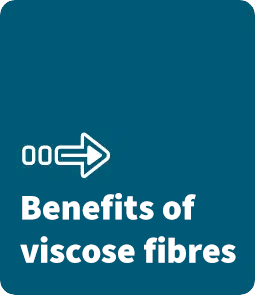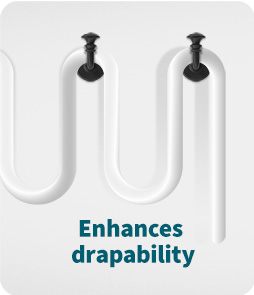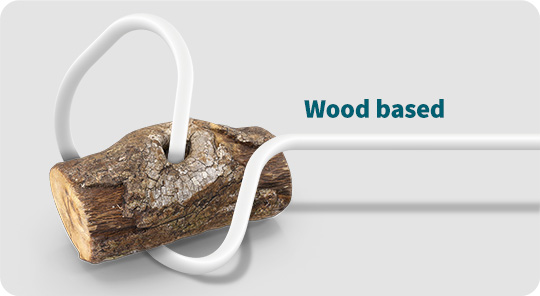Goonvean
VISCOSE
FIBRE






A Natural, Protein-Filled Fibre
Viscose (rayon) fibres are made from natural cellulose fibre, such as wood and plants. However, viscose fibres aren’t 100 per cent natural, they are made from naturally occurring polymers and are defined as semi-synthetic fibres as the molecular structure of the natural cellulose is preserved in the process.
Viscose fibres are also known as Rayon because they can mimic the look and feel of silk. The fibre is commonly used in textile manufacturing to create silk-like clothing, upholstery, furnishings, and other materials. Viscose is biodegradable, enhances drapability, and is very sustainable.
Our viscose fibres are commonly used in textile applications, as well as for products that require high moisture absorbency, such as lash-lengthening mascara. We also produce viscose fibres for manufacturers creating standard and speciality paper products. We have also produced viscose fibres for the oil industry to replace non-biodegradable synthetic fibres.
Quality matters, so at Goonvean Fibres, we’ve added further value to our viscose fibres, including zero fusion, improved flow characteristics, shorter cut lengths, and lower customer production costs.
Available in a range of sizes.
Standard Fibre Details
Viscose fibres are biodegradable and globally accepted for use in environmentally friendly applications. They are favoured for their high lustre, sheen, and moisture absorbency. Viscose also has exceptional volume building and dye affinity. We supply Precision-Cut Viscose Rayon fibres as an eco-friendly alternative to nylon, as a bulking agent, and to promote viscosity control.
Our Milled Viscose Rayon fibres are commonly used by manufacturers to produce paper and packaging, as well as for filtration, hygiene, and oil well drilling applications.
Technical Fibre Details
Viscose’s cellulosic base contributes properties similar to cotton and other natural cellulose fibres. The fibre has a similar chemical composition to cotton, however, the differences lie in the shape and physical properties of the fibre.
Viscose is produced from the wood pulp of trees which is what makes the fibre sustainable; the wood pulps grow and regenerate at a rapid rate. Once the wood pulp is collected, the substance is dissolved in the chemical solution of carbon disulphide to obtain cellulose xanthate. Cellulose xanthate is then dissolved in an aqueous solution of caustic soda and a spinning solution is obtained to create viscose.
In some circumstances, substances such as matting agents, dyes, modifiers, and surfactants are added to the mix to enhance strength and structure.
Viscose (0.95dtex,3.3dtex,28dtex)
| Characteristic | Unit | Specification | Method |
| Moisture Content | % | ≤ 13.0 | WI 107 |
| Melting Point | °C | Does not melt (Degradation begins >200) | WI 309 |
| Density | g/cm3 | 1.50 – 1.52 | WI 300 |
| Dry Tenacity | cN/dtex | 1.6 – 2.1 | WI 311 |
| Dry Elongation at Break | % | 18 – 22 | WI 311 |
Milled Viscose (RM60)
| Characteristic | Unit | Specification | Method |
| Moisture Content | % | < 15 | WI 107 |
| Melting Point | °C | Does not melt (Degradation begins >200) | WI 309 |
| Density | g/cm3 | 1.50 – 1.52 | WI 300 |
| Dry Tenacity | cN/dtex | 1.8 – 2.3 | WI 300 |
| Dry Elongation at Break | % | 11 – 22 | WI 311 |
To find out more, get in touch. We are happy to help you incorporate our fibres into your products, as well as discuss any bespoke requirements.
